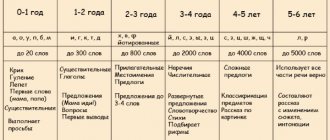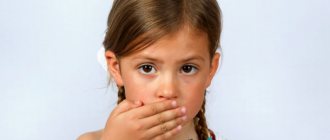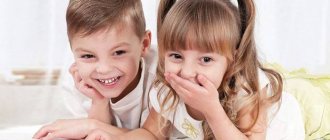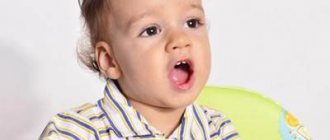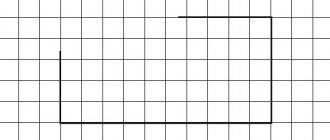By the age of three, most children are already quite independent, they have an idea of the world around them, are armed with some knowledge about objects and their properties, and a child’s speech at 3 years old contains a sufficient number of related words and sentences. After all, they have tested a lot of their knowledge in practice, that is, children have tried out from their own experience how to manipulate objects in their environment, and now they can talk about it with understanding.
A child's speech development at 3 years of age has a particularly wide range for different children of the same age. Some do not experience any difficulties in their statements, are sensitive to the slightest deviation from the norm in the speech of the adults and peers around them, and show interest in the sound analysis of words. At the same time, other children had just begun to construct sentences more or less correctly, and their speech was very far from perfect.
Features of speech development in children 3–4 years old
At this age, children's speech continues to actively develop. Children of the fourth year of life begin to draw conclusions and can reason about objects and the phenomena surrounding them. The child is interested in the world of people and things, he is interested in communicating with loved ones and with strangers. The time has come for questions, the answers to which the child, due to his age, is sometimes not able to listen to the end.
Active and passive dictionary
The development of speech for children 3–4 years old leads to the fact that the number of words that children use in speech (active vocabulary) doubles: from 1 thousand words available to them by the age of three, to 2 thousand by the end of the third year of life . Moreover, they not only use them, but inquisitively listen to the meaning of words, and even create their own. “Who called a cat a cat and a hippopotamus a hippopotamus?” Children play with the word, tasting it, rhyming and changing it, coming up with incredible combinations of sounds: milk, toloko, far, coloko; slam, slam, slam, slam.
Long new words, incomprehensible in content, can be pronounced distorted (lipestricism - electricity, lisipede - bicycle), syllables and sounds are often rearranged in them (pervyi - first, gamazin - shop). Combinations of two consonant sounds in a row continue to cause difficulty in pronunciation. In order to pronounce them correctly, the child inserts a vowel sound between them (zinayu - I know), or simply does not pronounce one consonant sound.
Children can already name the details of objects, distinguish externally similar objects, for example, a cup-mug, a tiger-lion. By the age of three, most children should already be able to easily distinguish the animals in the picture below (show it to your child and check):
When learning new words, children of this age establish semantic connections between objects, actions and their names. They begin to think meaningfully about the vocabulary of their native language. However, children's speech is not yet developed enough for full communication. If at the everyday level the baby still has enough mastered words, then they are not enough to retell a long fairy tale or describe a memorable event.
Speech grammar for three-year-old children
The speech of a four-year-old baby consists of phrases. On average, there are 3-4 words in a sentence. At the age of four, they become common, and complex constructions begin to appear - compound and complex sentences. For example: “the doll wants to eat, I’ll make soup,” “when spring comes, the birds fly.”
Children can use singular and plural homogeneous members in phrases. For example, “I draw flowers and clouds”, “the mouse jumps and laughs”. Nouns and verbs begin to give way to their positions; more and more adjectives, adverbs, pronouns and numerals (one, two, three, first, second, third) are found in speech.
But the speech of a 3-year-old child is still imperfect; it is difficult for him to form the plural of many nouns, for example, trees, mouths, sleeves. In coordinating adjectives with nouns, he can also make mistakes, for example, “ripe apple”, “bright sun”.
Often in the speech of children there are incorrect case endings, and the change of the verb in persons and numbers suffers. For example, “I see trees”, “I have a lot of candy”, “children are riding bicycles”. Show the picture below to your child and check this point:
Sound pronunciation
The child grows - his articulatory apparatus becomes stronger, the movements of the tongue, lips, and lower jaw become more accurate and coordinated. A stronger tongue allows you to correctly pronounce previously softened consonant sounds: malyako - milk, syadik - sadik. Long words of 3–5 syllables, as well as words with combinations of two consonants such as bread, class, bottle, are easier to learn.
Most often at this age the following sound pronunciation disorders occur:
- Replacing hissing sounds with whistling sounds: sapka - cap, nozik - knife;
- Unclearly pronounced sound ts, ch: tsyplenok - chicken, prints - prince, tai-chai;
- Absence in speech of the sounds l, r or their replacement with the sounds y, v, softened l: liba - fish, yodka - boat, vozhka - spoon.
If you notice these disorders in your child, you should not worry, but you should consult with a speech therapist. He will always tell you whether this is the age norm, which does not yet require the intervention of a specialist, or not. Although, we must pay tribute, already at this age there are children whose sound pronunciation has practically no defects.
Speech development at 3 years allows for rearrangements and omissions of syllables in polysyllabic words such as hello, please, purple. Such pronunciation deficiencies are successfully overcome by the end of this age period.
The intonation expressiveness of speech is growing - children can imitate adults, adding very expressive notes to the reading of poems by heart and to stories from their own experience. Adjusting the rate of speech and its volume is not always available to children of the fourth year of life. They may speak very quietly, especially when talking to people they don't know. When the impressions of some significant event are too great, the child can talk about them “excitedly,” hesitating and hastily pronouncing words.
A very valuable quality appears - attention to one’s own speech and to the speech of others. Children begin to notice pronunciation deficiencies made by their peers, but less often - their own.
Connected speech
A three-year-old child is not yet able to logically and coherently talk about what he saw, what interested him, or completely retell the content of a work of art read to him. Children of this age are still unable to deliver a monologue on any topic without additional questions. Children's statements are not developed, the phrases are simple and not always connected with each other.
Children cannot compose a coherent story from a picture. They can only list the objects depicted on it and the actions performed by the characters in the image. “There’s a bunny here. He eats carrots. His mother is there. She sits and watches."
Children of this age easily remember and enjoy reciting poems and nursery rhymes that are understandable in content. They can repeatedly listen to the same fairy tale, and then retell its content almost word for word, and the content of some words may be completely incomprehensible to them (bast hut, tar barrel).
conclusions
By the age of 3, a child develops many new skills and abilities. The baby becomes more and more independent, he gradually learns to take care of himself. A three-year-old child controls his body quite well; he can maintain balance, run, jump, and play ball. The baby’s cognitive abilities also improve: thinking becomes imaginative, memory, attention, speech, and imagination develop. Communication with people reaches a new level, children become interested in communicating with peers.
Speech development norms for children from 3 to 4 years old
Despite the fact that children of this age period may be at different levels of speech development, there are approximate guidelines that you can rely on when assessing your child’s speech. By the end of three years, the baby comes with the following achievements:
- His speech is clearer and his pronunciation has improved markedly.
- The baby can name almost all the objects around him: clothes, shoes, furniture, toys, interior items.
- More and more adjectives, adverbs, pronouns, and prepositions appear in speech.
- The child matches words by gender, case and number, but not always correctly.
- Children can remember and retell short poems and fairy tales.
Normally developing children of this age strive to communicate with peers and adults and actively establish contacts through speech.
Communication skills
If your child used to play alone, now the company of his peers is important to him. Children at 3 years old are usually very sociable and outgoing. According to the classification of M.I. Lisina for this age is characterized by an extra-situational-cognitive form of communication. This means that communication most often occurs against the backdrop of joint activities to get to know the world. At the same time, it is very important for a 3-year-old child to feel approval and sympathy from loved ones.
How to determine delayed speech development in 3-year-old children
The development of a child’s speech at 3 years of age is most often accompanied by disturbances in motor skills and behavior. Specialists working with such children can say with full confidence that children with speech impairments exhibit the following signs of activity:
- Children are awkward, their movements are uncoordinated, they have poor balance;
- There is a noticeable lag in fine motor skills of the fingers, precise movements with small parts of toys and board games are inaccessible, children do not like to get dressed, fasten buttons, and cannot regulate the pressure on the pencil while drawing.
- Children are inattentive and constantly distracted;
- Among such children, manifestations of hyperactivity, or, conversely, inhibition are common.
The presence of these symptoms indicates that there are disorders of the central nervous system due to its organic failure. In some cases, delayed speech development (SDD) may be caused by unfavorable conditions for raising a child and his social environment.
Delayed speech development in 3-year-old children affects all aspects of speech: sound pronunciation, vocabulary, coherent speech, and its grammatical design. Possible problems:
- Children do not pronounce not only phrases, but also individual words; their speech remains at the level of babbling.
- There is no coordination of parts of speech; children's speech is similar to the speech of a foreigner who has just learned Russian. For example, “Tanya give me a kitty,” “Kolya went to bed,” “Mom sat down in a chair.”
- Whole groups of sounds are pronounced incorrectly, the child distorts or replaces some sounds with others, rearranges sounds and syllables not only in polysyllabic, but also in simple words. For example, nose - socks, eye - glasses, chamber - lapata.
- Prepositions are missing or used incorrectly (on, in, above, under, behind, before, between).
- The child's speech is unfluent, its pace is too fast or too slow.
- Phrases consist of 1–2, less often 3 words, they contain only nouns and verbs (“telegraphic” style of speech).
At this age, most children are already aware of the limitations of their speech capabilities. Since SRD prevents them from contacting peers and adults, these children may exhibit negativism, isolation, and increased irritability.
Adaptation in kindergarten
Most often in our country, it is at the age of 3 that a child receives a ticket to kindergarten. Regardless of the character and temperament of the child, adaptation occurs for everyone.
Here are some tips to help you and your child get through this period as smoothly as possible:
- Take some time to get used to it. The best option is 3-4 weeks part-time. Even if the teachers advise you to leave the child and go away, do not agree. Find an opportunity to be with him, do not leave him alone during such a difficult period. If your baby plays with children and doesn’t need you, then just watch him from the side.
- Try to create a comfortable environment in the garden and at home. Allow you to take your baby's favorite toy into the group if he asks for it.
- It is important that at home the child is given the opportunity to switch. During adaptation to kindergarten, you cannot demand that he be an angel at home. The baby gets very tired psychologically. Let him just lie at home if he wants. Or, on the contrary, he makes noise, screams and runs. He needs to learn to compensate and balance the mental load.
- Do not burden your baby with additional sections and circles. First, let him get used to one thing.
- The child needs your support. Outside the garden, give it all of yourself: chat, play, read, walk. Put down your phone and computer and spend time together.
- Talk to your child. Ask questions, find out the names of your child’s teachers and friends. Take an interest in your child's kindergarten life.
- If just a few months ago a baby was born in the family, do not send your older child to kindergarten. Having a younger brother or sister is already stressful, don't add additional stress.
- Make friends with teachers. Ask them about how your baby behaves in kindergarten and how his peers treat him.
Photo source: shutterstock.com
Self-diagnosis of speech delay
The main method for diagnosing mental retardation at home is to observe your child’s speech. While observing your baby, you should note how developed his vocabulary is, how many words he uses. For this purpose, play situations are created where children are encouraged to name objects and toys, and small performances are performed with his toys. You need to carefully analyze how the baby constructs phrases and how many words they consist of.
To assess a child’s understanding of adult speech, you can offer him the following tasks:
- Show parts of your body, body parts of toy animals;
- Show in story pictures what their characters are doing. For example, who is running, who is watering the flowers, who is feeding the chickens, who is sleeping;
- Give simple instructions consisting of at least two steps. For example, first take a doll from the closet, and then put it on a chair;
- Ask about the purpose of the items. For example, show what you eat, wipe your hands, brush your teeth;
- Read a short text and ask questions about its content.
It is necessary to note what sounds the baby pronounces incorrectly, what sounds he replaces with those he pronounces. The child’s ability to retell a short fairy tale and his ability to use intonation are assessed. In addition to assessing speech, you need to pay attention to the state of general and fine motor skills. The following indicators are checked:
- Does the child maintain balance when walking and running?
- can he step over objects?
- how he catches the ball
- can he climb?
- does one maintain balance on a reduced area of support while standing on one leg,
- can he fasten buttons?
- Is the baby able to make precise movements with his fingers?
If the development of a child’s speech and motor skills deviates from the norm, you should consult a specialist and undergo the recommended in-depth examination. If there is a need for this, you need to start corrective work with a speech therapist, defectologist, or psychologist.
Fine motor skills
The youngest preschooler actively develops and improves fine motor skills. He must be able to:
- hold a pencil, felt-tip pen, or drawing brush correctly;
- trace simple drawings using dots;
- draw geometric shapes, straight and broken lines;
- write familiar block letters;
- use scissors to cut simple shapes from paper;
- shade the drawing in different directions;
- coat the paper appliqué parts with glue and glue;
- sculpt balls and sausages from plasticine and connect them.
There are many finger games for developing a child's fine motor skills.

